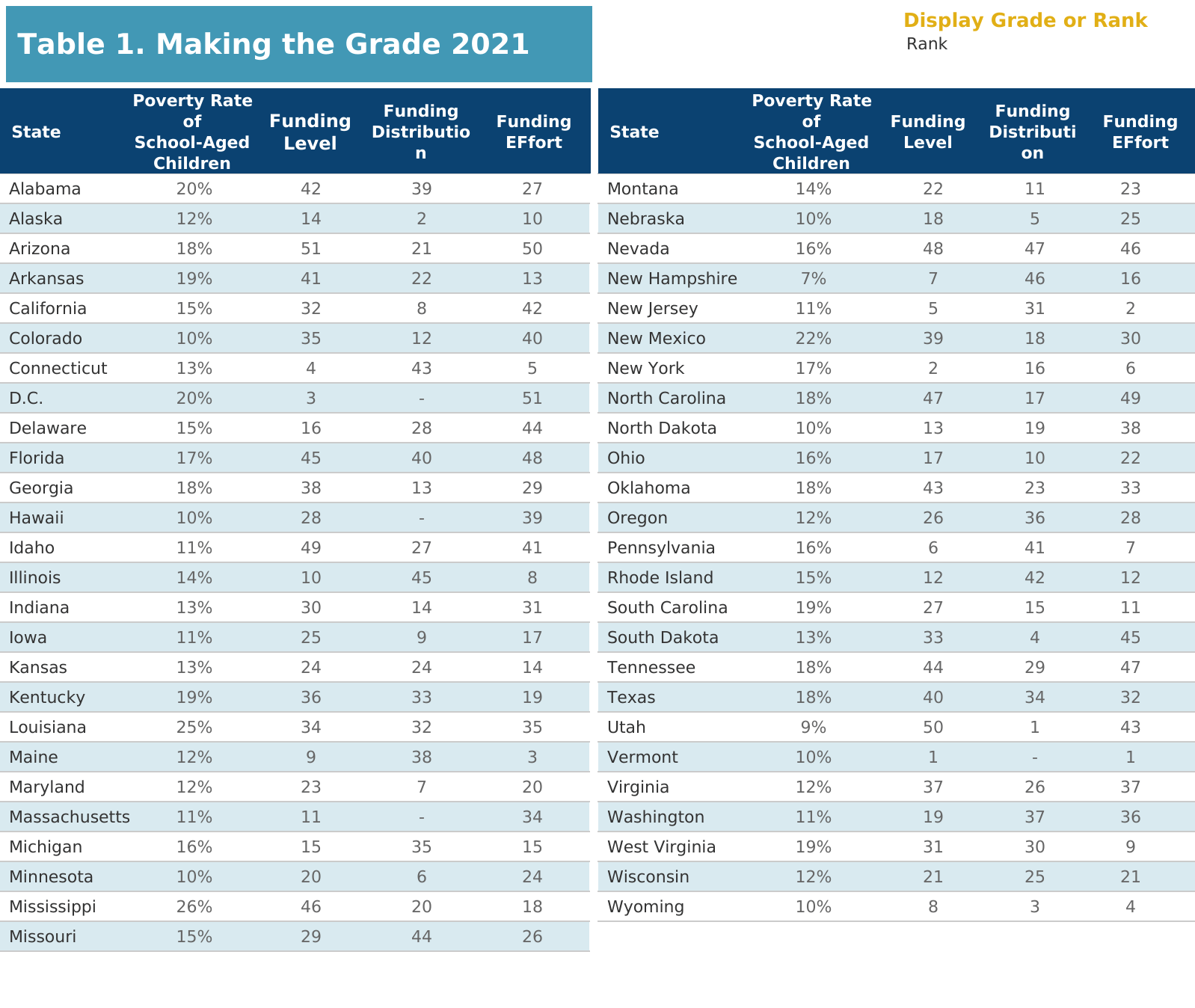This post is also available in: Español (Spanish) Kreyòl (Haitian Creole)
Every child deserves a quality education that recognizes their unique needs and provides the resources they need to thrive. This was never more evident than over the past two years of the pandemic as families, schools and states grappled with how to meet the diverse needs of their students. It seems obvious that to ensure each child has access to the support they need we must fund schools based on students’ needs, but this is not how many state funding formulas function.
State funding formulas vary in terms of how and how much they allocate to K-12 education. Pandemic recovery funds provided states a much-needed opportunity to examine how to shift their current school funding models to be more sustainable and better serve student needs. Some states that have budget surpluses, like Tennessee, are making structural changes to their state education funding formula to take a more student-centered approach and build long-term gains in equity for all students. But some may be nervous about taking on this issue given how challenging it seems to discuss anything, let alone issues that marry important social programs and funding.
In Tennessee we find inspiration and perhaps even a playbook for how to take on such policy. Signed into law in May by Governor Bill Lee, Tennessee Investment in Student Achievement (TISA) begins to address educational disparity through an overhaul of the state’s education funding formula. The legislation creates a student-based funding formula that includes additional funding for specific student needs and increases annual recurring state funding for education, resulting in $9 billion in state and local education funding annually. This is an important investment for a conservative state that was ranked 44th in education spending but now has the highest per-student funding in the South. The focus on students’ needs seems to be a strategy all can agree on at a time when much about education is hotly debated.
The new funding formula provides additional per-student spending for students with specific needs, such as those living in concentrated poverty or students with disabilities. These funds are critical to closing the longstanding achievement gaps that have plagued Tennessee for decades.
There were certainly enabling conditions leading up to this bipartisan achievement and factors of the model that can be replicated across the nation. A diverse statewide education equity coalition, the Tennessee Alliance for Equity in Education (Alliance), led trainings for stakeholders to grow understanding about how state education funding works. Once TISA was introduced, the Alliance’s resources and tools supported coalition members, educators, parents, and legislators in robustly analyzing TISA elements. The Alliance hosted dozens of webinars and meetings with hundreds of participants and held a town hall with the Commissioner of Education.

Several policy advocacy organizations rallied around a set of common principles related to a modernized education funding formula. Some of those principles included the need for a larger investment of funds, a student-centered formula and a transparent formula with more clearly calculated local funding contributions. They also partnered with local and national school finance experts to evaluate specific provisions in the TISA formula and became technical assistance providers to school districts and legislators anxious to understand the impact of TISA’s local contribution calculations.
Gov. Lee also proposed ambitious education funding goals, which were aligned to the common principles amplified by advocates. He and Commissioner Penny Schwinn also engaged in a statewide listening tour to gather input about TISA before it was introduced into the legislature.
Many organizations and individuals were instrumental in laying the groundwork for this important legislative change. Students will reap the benefits of their work to build strong relationships between the governor, the state department of education, parents, community leaders, educators and school leaders. The state made the right move for ALL Tennessee students—each of whom deserve to reach their full potential and deserve schools that are better resourced to support their individual needs and help them thrive.
The new funding model issues a new era for Tennessee, which now joins a national movement to revise education formulas to center on student needs and proactively work toward educational equity. Other states engaged in this work include California, Connecticut, Georgia, Michigan, North Carolina, New Mexico, Pennsylvania and Virginia. Now, more than ever, is the time for policy leaders to come together and do what is best for the future of our children, states and nation by investing in their educational needs.
Adequate and equitable state funding for our nation’s schools is essential, but it cannot be looked at as the end goal. It is only the starting point. More must be done to effectively prepare all students for lifelong success.
Tennessee’s increase in base funding per student has proven benefits for both students and schools. Increased and targeted funding levels better support teachers and school leaders in creating rigorous, responsive learning environments for public school students, which translate into better daily learning experiences, as well as better learning and life outcomes. The process to get there was at times challenging but never impossible.
When states fully support children’s education—and couple that with programs and resources that invest in their health, their family’s economic security and the overall vitality of the communities in which they live—then we will truly create the conditions where children and families can thrive.
"This is an important investment for a conservative state that was ranked 44th in education spending but now has the highest per-student funding in the South. The focus on students’ needs seems to be a strategy all can agree on at a time when much about education is hotly debated."
Carla Thompson Payton, Vice President for Program Strategy of the W.K. Kellogg Foundation









Comments